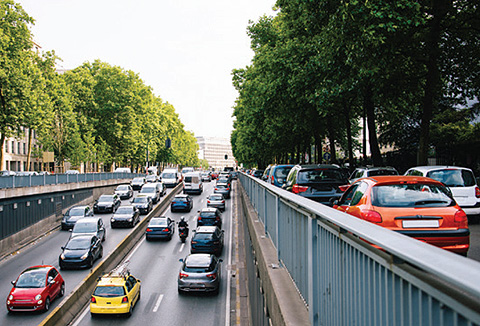 The roads of Europe are busier than ever before. As governments across the continent search for solutions to help curb air pollution, one immediate option gains traction – LPG.
The roads of Europe are busier than ever before. As governments across the continent search for solutions to help curb air pollution, one immediate option gains traction – LPG.
According to the World Health Organisation, 7 million people die prematurely each year because of illnesses caused by air pollution. In Europe the numbers are lower, but still unacceptable. Everyday European citizens walk into the streets knowing that they are surrounded by polluted air, in great part caused by the transport sector.
Autogas – LPG used in the transport sector – is a viable option that can make an immediate and impactful difference. Recognised in the Alternative Fuels Infrastructure Directive, Autogas is the most widely used alternative fuel in Europe with over 15 million vehicles on the road across the continent, served by over 46,000 refueling stations. The main benefit of Autogas lies in the savings it can offer consumers, a litre of Autogas is on average 50% cheaper than a litre of conventional fuels. In fact, among the alternative fuels available to consumers, Autogas is the one that allows any driver in Europe to travel freely without concerns about refueling, thanks to the widespread network of stations. But Autogas' benefits go far beyond the economic value it brings to its users.
The "Dieselgate" scandal led policy makers to seriously consider alternative options to reduce the levels of air pollution. The Autogas industry, confident in its own product, tested it not only in laboratories but on roads in Europe, where real people drive. The results made clear that Autogas can play an essential role in improving air quality, especially in urban areas, where NOx and particulate matter (PM) emissions affecting human health are generating socially and economically unacceptable costs. Recent research on real driving emissions measured through a portable system showed that Autogas cars emit on average 45% less CO, and 90% less small particles than their gasoline equivalents. It also confirmed that LPG brings a 98% reduction in NOx emissions compared with diesel.
Autogas vehicles bring benefits in terms of CO2 emissions. Tests in real driving conditions confirmed that Autogas vehicles emits CO2 at the tailpipe. What is more, according to the calculation method and reporting requirements in annex of the Fuel Quality Directive, based on the JRC JEC study, LPG vehicles emit 21% less CO2 than petrol and 23% less CO2 than diesel equivalent vehicles on a life cycle basis.
New technologies, such as hybridisation and battery range extenders, and direct injection enginesoffer great potential for reducing the environmental footprint of Autogas. Moreover, Bio-LPG recently introduced in the European market brings CHG emissions down by up to 90%, compared to conventional LPG.
The future of mobility is being written as we go. Many different options present themselves as the silver bullet that will solve all the challenges. In the meantime, Autogas represents the most immediate, practical and economic solution to improve air quality in European cities.
Contact information
Cécile Nourigat Autogas Manager - AEGPL (European LPG Association)
Email: cecile.nourigat@aegpl.be